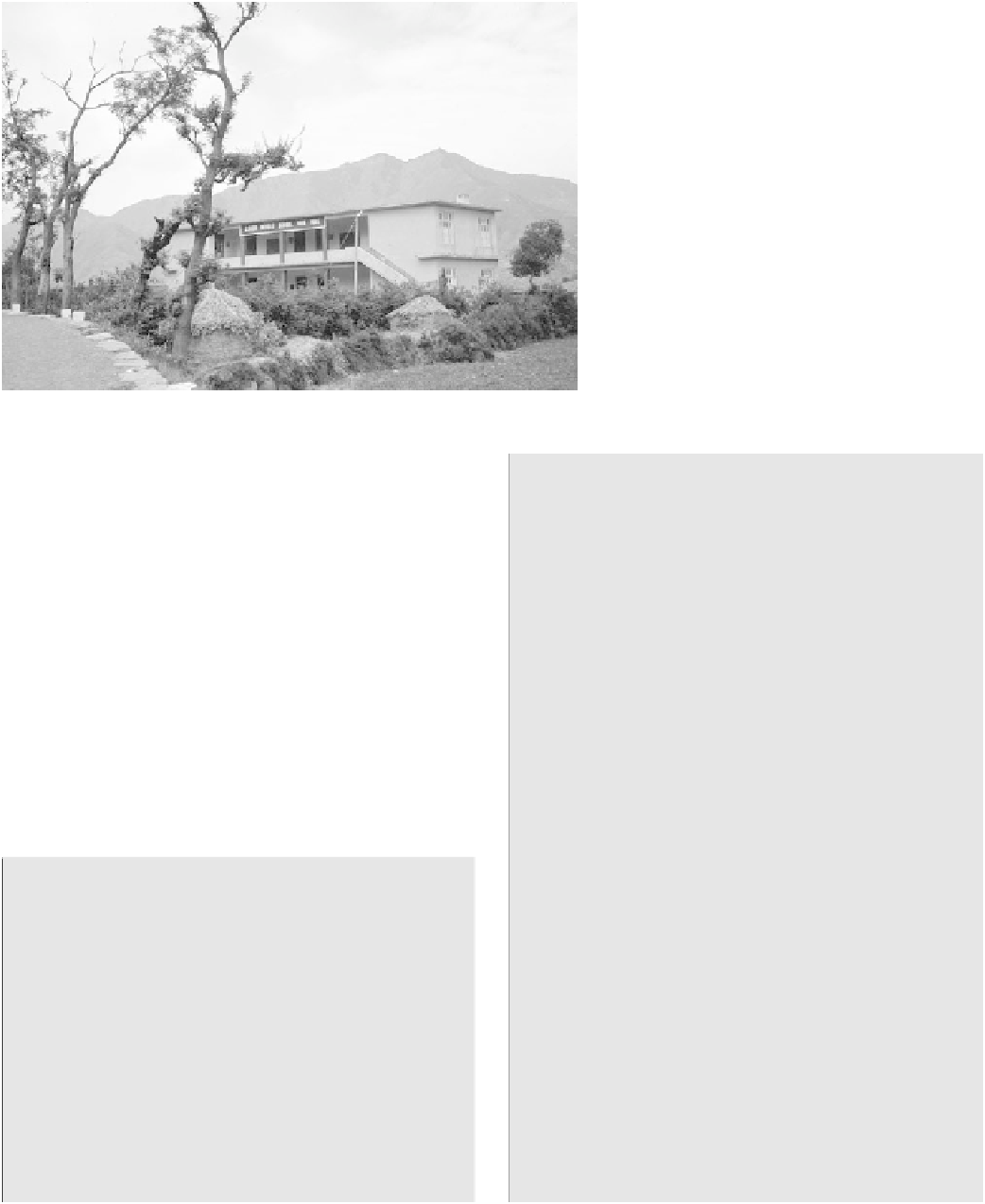Geography Reference
In-Depth Information
Figure 7-9
Girls' school in Swat, NWFP . The W ali (king/ruler)
of Swat in the 1970s was a very enlightened man
in that he believed in family planning and educa-
tion for girls. (A family planning clinic was just
down the road from this school.) In 2009, the
T Taliban took over Swat and destroyed all girls'
schools.
Photograph courtesy of B. A. Weightman.
T oday' s
jihadists
, to quote the author Hassan Abbas
(2005), “interpret
jihadi
primarily in terms of the use of
force to impose their version of Islam on others and to
fight “infidels” [nonbelievers] to conquer the world.”
Even Muslims with more liberal views are to be extermi-
nated. Although we might think that these people must
be uneducated in the ways of the wider world, in fact,
they derive from all social classes and come from many
different countries such as Morocco, Somalia, Y emen,
and even Great Britain and the United States. Further-
more, their numbers are increasing.
Aside from the attractiveness of their religious fervor
to many Pakistanis,
jihadi
groups increase their popular-
ity by financially supporting their members' families.
They provide housing, food, religious education, and
other services to otherwise poverty-stricken people.
form better than boys. However, there are very few
religiously educated female teachers regarded to be
suitable as seminaryinstructors.
Madrassas
bloomed under the rule of the reli-
gious fundamentalist, President Zia, in the 1980s.
The failure of the Pakistani government to provide
alternative forms of education and to require reli-
gious instruction for the masses has only encour-
aged an increase in religious schools.
The majority of religious schools have
Deobandi
roots. This rigid form of Sunni Islam emerged from a
madrassa
in Deoband, a town in India' s Uttar
Pradesh, in 1866. The Deobandis are traditionally
apolitical but this stance has changed, particularly in
Pakistan. Currently , Indian Deobandis are regarded
as orthodox Muslims while Pakistani Deobandis are
seen as radical extremists. They are particularly hos-
tile to the Pakistani Sufis, who worship saints and
dance as they practice their mystical form of Sunni
Islam. Most Taliban are Deobandi-trained.
It is accepted that southern Punjab is home to
the most aggressive and “poisoned” of all
madrassas
.
These are funded generously by private citizens from
Saudi Arabia, the United Arab Emirates, and Kuwait
in an effort to further the spread of Islam. Many reli-
gious schools reject government funding because
they think the money comes from America. However,
numerous seminaries ingratiate themselves with poor
families by providing funds, food, and even accom-
modations for both students and families.
Madrassas
In 1947, there were 189
madrassas,
also known as
“seminaries”in Pakistan. By 2006, there were
11,000. T Today, , there are more than 30,000. Most of
these religious schools are for boys; only 448 are
open to girls. In some girls' schools, not only do they
have to be fully covered in black—looking out of a
narrow slit-but also they have to wear gloves. More
than 2 million Pakistani students attend
madrassas
.
Some Pakistani parents want their girls to have
an education (Figure 7-9). In fact, research shows
that girls have more interest in learning and per-



















Search WWH ::

Custom Search